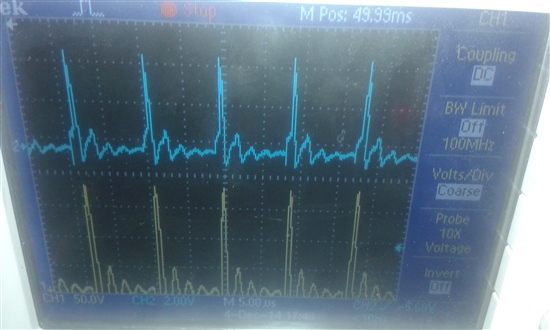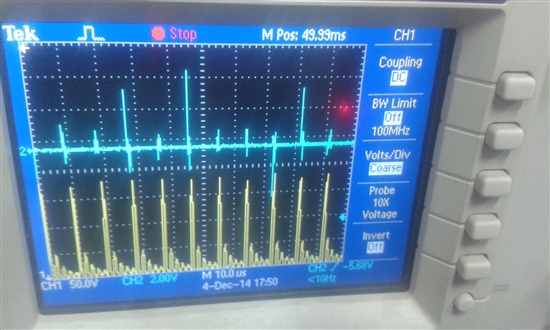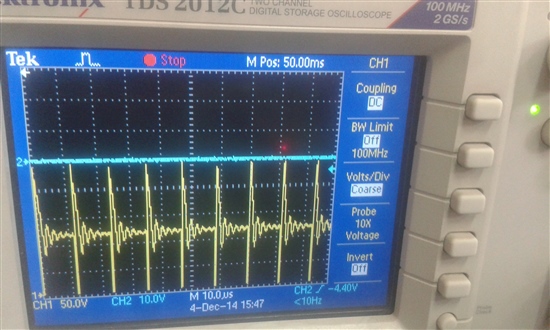Hello,
I am copying a ti circuit using 28600 for a 400v-12v converter, the TI's example part number is PR798.5824.PR798B-2_SCH NC.pdf
but my board is on an off all the time, from the oscilliscope , the power supply pin of the chip fluctrates ,lower than shut down threshold; then it shut sdown for a while.later it turns on again.
however, as the chip relys on the bias winding of the transformer, if the circuit is not working , then the winding cannot provide the nesssery bias for itself.
so this is a bit hard to identify the problem.
any one has some clues/tips?
how the output capacitance of mosfet could affect the circuit? we only changed the mosfet of which output capacitance is 12pf compared with the original 50pf.
thanks




